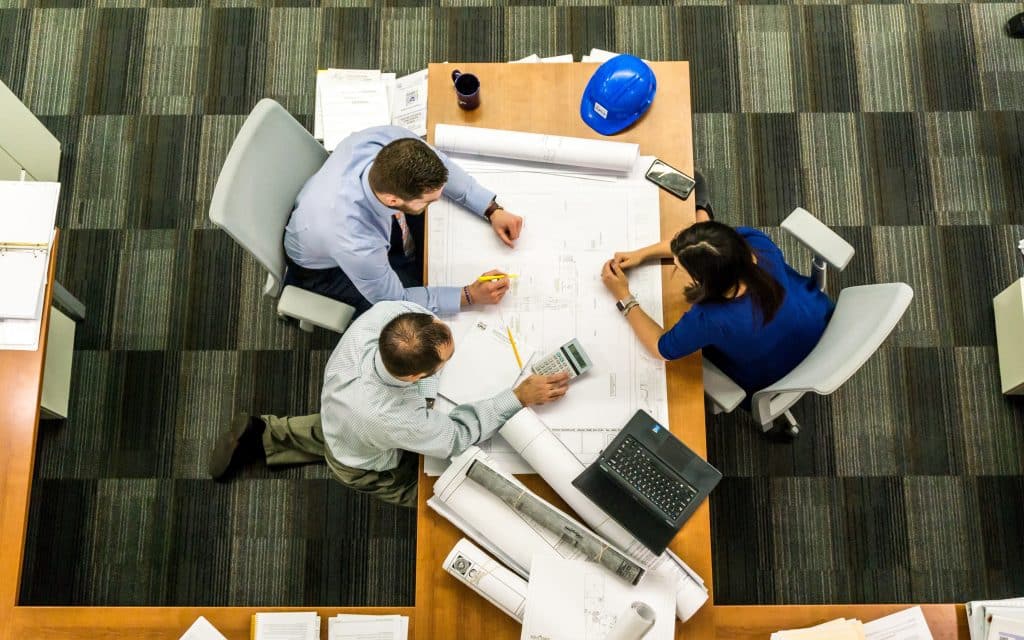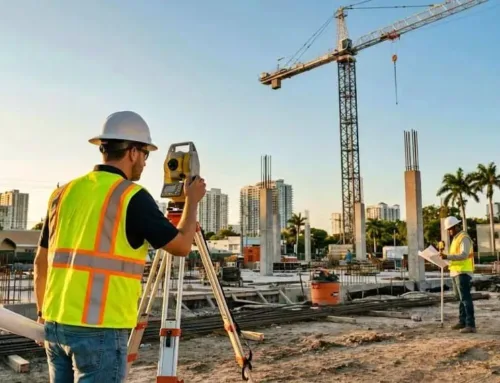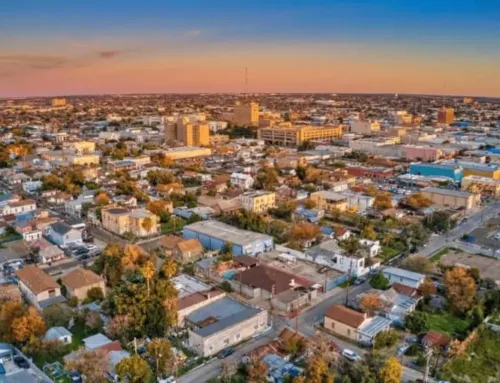Commercial real estate development focuses on taking an idea from paper and turning it into a real property. This process delivers a product that meets some form of demand.
The real estate development process is an intricate one — it involves participation from various professionals, including:
- Architects
- Civil engineers
- Site planners
- Surveyors
- Lenders and title companies
- Attorneys and consultants
Related: Learn to Invest in Commercial Real Estate
Let’s break down the commercial real estate process into three stages:
1. Site Selection
The initial real estate development phase involves a massive amount of research and analysis. For a commercial site to be successful, it must meet regulatory requirements, market demand, lending conditions, etc.
Site Investigation Reports (SIRs)
Site investigation reports allow real estate developers and investors to better understand what their due diligence costs will be. They also assess potential issues with the site and look at what needs to be done to meet requirements, including:
- Land usage and zoning
- Building permits
- Building setbacks
- Landscape setbacks
- Signage requirements
- Public improvements
- Engineering
- Fire department requirements
- Parking requirements
- Lighting ordinances
- DOT and access requirements
- Utility services
The goal of these reports is to emphasize potential problems that may occur when pursuing a project. A SIR provides developers with confidence that their project is feasible and potentially profitable.
Need a SIR for your real estate development project? We can help you understand your due diligence costs by providing you with a full analysis of the costs associated with your project’s development. Get in touch here.
Due Diligence
This part of the real estate development process entails examining potential liens, possible encroachments, and zoning restrictions.
Due diligence means asking questions like:
- Is your real estate development project compatible with the area’s zoning laws?
- Will the property need to be rezoned or require a variance?
- Can you meet setbacks, parking requirements, etc.?
Property Surveys
Getting a property survey means getting a legal document showing the location of every improvement relative to the boundaries of a commercial property. The survey depicts the descriptions and boundaries of site encroachments, rights-of-way, and property easements.
Property surveys are a necessary part of the real estate development process and generally consist of an illustration of a property’s physical features and a written report outlining the surveyor’s concerns and opinions.
2. Development
Once you’ve created your site plans, performed your due diligence, and had a property survey performed, you’ll likely have a purchase contract signed.
The next step is about getting the development details, focusing on approvals and sign-offs for your proposed development to get municipality approval.
Related: Commercial Real Estate Challenges in 2022
Municipality Submittal and Review
To bring your real estate development project to life, you’ll need the approval of government and municipal entities — typically by submitting the following:
- Zoning review: Your zoning review helps ensure compliance with the provisions and standards set by each municipality and encourages quality development. It also promotes factors like:
- The appropriate use of land
- Aesthetic value
- Adequate provision of public requirements
- Site plan review: You’ll also submit a site plan and any associated documents to the necessary agencies, government departments, and utility companies for review. This review addresses how your particular development is designed and any potential issues related to things like:
- Public safety
- Sewage disposal
- Water supply
- Public obstructions
- Traffic
- Emergency access
- Utilities
- Design review: Finally, we have the design review that provides landscape plans, building elevations, etc., related to meeting certain design principles. Once you get approval for the site plan and design, you’ll generally be ready to submit your construction drawings for review.
The City Entitlement Process
Before you can begin construction on your real estate development project, you’ll need permission from the community and your local regulatory agencies. You’ll likely have to answer questions from local residents, government leaders, and city planners.
Topics during this step typically include:
- Rezoning and zoning variances
- Use permits and utility approvals
- Landscaping and road approvals
Oftentimes, you’ll also need approval from a municipal body (like the city planning commission or city council). In addition, a public hearing might take place so that local residents and property owners can learn and provide feedback on your proposed project.
Other Pre-Construction Processes
Before getting to the final stage of the real estate development process, you’ll likely go through a few additional steps, including:
- Submitting building plans and construction drawings to the building department for approval
- Finalizing your budget for permits, site preparations, etc.
- Getting approval for your building permits and allowing for inspections to be performed
3. Construction
Once you submit your development plans and receive approval, you enter the third phase of the real estate development process — construction; it’s time to start building.
However, before beginning construction, you should ensure that everyone involved (contractors, architects, etc.) are on the same page about the overall plans and expectations.
Survey Staking
When you’re ready to bring your plans to life, one of the first steps you’ll take is survey staking. This process involved physically mapping out your planned development process on the site. Survey staking generally marks property lines, the inner and outer building walls, storm and drainage flow, and any concrete features (sidewalks, curbs, driveways, etc.).
During this process, you’ll also likely gather soil samples from the site for a soil engineer to test, ensuring the soil conditions match the initial investigation and making any design modification recommendations if necessary.
Does your lender require an ALTA survey? Most do — We can provide you with information about easements, encroachments, accessibility, and setback violations. Get in touch here.
The Real Estate Development Construction Process
After the survey is complete, there are various stages that the construction process goes through:
- Earthwork: This step involves importing and exporting soil, stabilizing the soil, grading the site, etc.
- Foundation: Next, construction crews will begin laying the foundation for the building.
- Building: Then, crews begin the building construction, consisting of utility work, framing, roofing, HVAC, etc.
- Interior: The interior work of new commercial development includes aspects like drywall, electrical, ductwork, insulation, flooring, etc.
- On-Site: Various on-site work also takes place, including landscaping, site grading, and paving.
- Off-Site: This work involves working on things outside of the property, including infrastructure for access roads, curbs, sidewalks, etc.
- Inspections: Finally, inspections will take place to check that the construction meets all municipal codes and ordinances regarding fire safety, structural integrity, electrical, HVAC, plumbing, etc.
Related: Buying Land for Commercial Use? Read This.
After all that comes the project close-out, punch list, and certification of occupancy, then it’s time for the final step: The tenant move-in. Now, you’ve gone through the entire real estate development process, from conceptualization to construction to renting the space!









